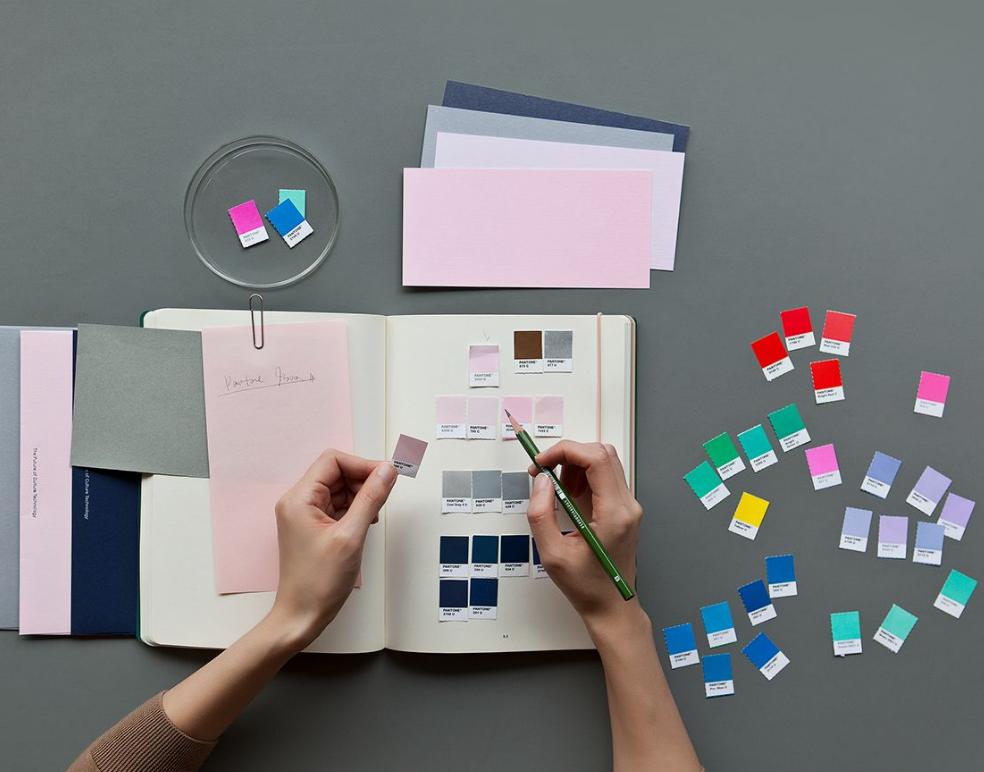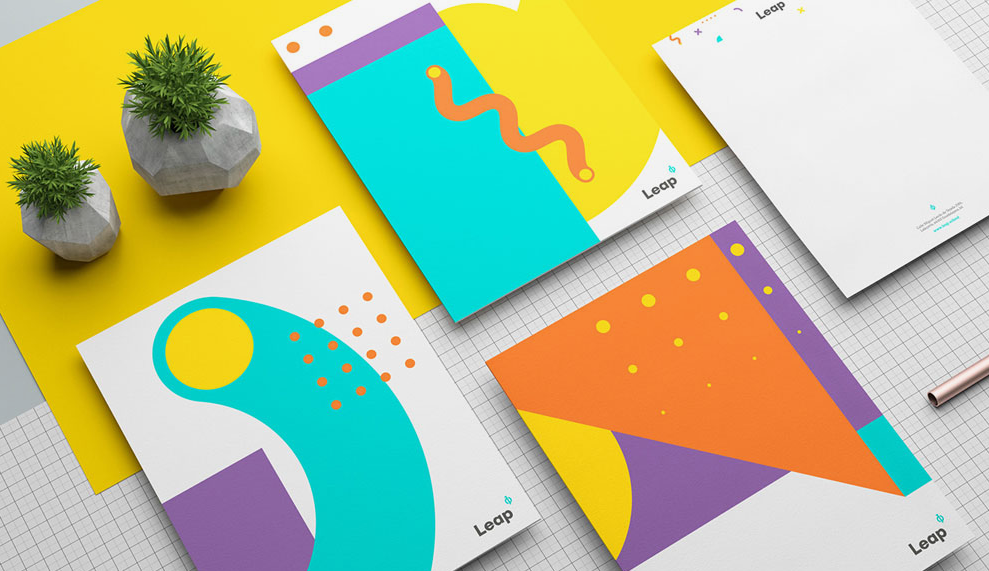Visual Identity Graphic Design encompasses the logo, color, typography, and images used to represent and differentiate a brand. It is the visible representation of a brand and communicates its identity across various mediums. A strong visual identity is distinct, and unique, and stands out from the crowd, helping to shape the brand’s perception. It includes elements such as the logo, color scheme, web design, and physical store design. Visual identity plays a crucial role in creating a cohesive and recognizable brand image.
By effectively utilizing visual elements, a brand can establish a strong identity and connect with its target audience.
Visual Identity Graphic Design

What Is Visual Identity Graphic Design?
Visual Identity Graphic Design is the visual representation of a brand through elements like logos, colors, and typography. It aims to create a distinct and cohesive identity that communicates the brand’s essence across various mediums. It helps in shaping a brand’s image and differentiating it from others in the market.
Components of Visual Identity- Visual Identity Graphic Design
A strong visual identity consists of four main components:
– Logo: Represents the brand visually
– Color: Establishes brand recognition
– Typography: Defines the brand’s voice
– Images: Convey the brand’s message visually.
Qualities of Good Visual Identity- Visual Identity Graphic Design
Good visual identity is:
– Distinct: Stands out from competitors
– Purposeful: Communicates brand essence effectively
– Unique: Reflects brand identity authentically.
Visual Identity In Art
Visual identity in art encompasses logo designs, brand colors, and typography to create a cohesive and unique brand image. These elements work together to shape a brand’s identity.
Creating Visual Identity Design
Creating a visual identity design involves strategically combining a logo, color scheme, and typography to visually represent a brand consistently across all platforms.
Importance of Visual Identity Graphic Design
Visual Identity Graphic Design plays a crucial role in establishing brand recognition and communicating the essence of a business or organization. It encompasses various elements like logos, colors, typography, and images that collectively form a distinct and memorable brand identity.
Subheading 1
Creating a strong visual identity is essential for brands to stand out and connect with their target audience. It helps in building credibility, establishing brand consistency, and conveying the values and personality of the brand effectively.
Subheading 2
Key Components of Visual Identity
Visual identity comprises four main components: logo design, color palette selection, typography choices, and image styles. Each element plays a crucial role in creating a cohesive brand image that resonates with the target audience.
Subheading 3
Creating A Memorable Brand Image
A distinct visual identity helps in creating brand recognition and differentiation in a crowded market. By focusing on consistency across all brand touchpoints, businesses can enhance brand recall and establish a strong presence in the minds of consumers.
Elements of Visual Identity Graphic Design
Visual Identity Graphic Design is a vital aspect of any brand’s marketing strategy. It encompasses all the visual elements that create a brand’s image, including logos, colors, typography, and imagery. In this article, we’ll explore the key elements of Visual Identity Graphic Design and how they contribute to the overall success of a brand. We’ll also provide some Visual identity examples and discuss Visual identity vs brand identity. Let’s dive in!
Logo Design
A logo is the most recognizable element of a brand’s visual identity. It serves as a symbol that represents the brand’s values and identity. A good logo should be simple, memorable, and versatile. It should also be scalable, so it can be used on different media, such as websites, business cards, and billboards. When designing a logo, consider the brand’s target audience and the message it wants to convey.
Color Palette
Colors play a crucial role in creating a brand’s visual identity. They evoke emotions and convey meanings that can influence how customers perceive a brand. A well-designed color palette should be consistent across all media and reflect the brand’s personality. It should also be versatile, so it can be used in different contexts. When choosing colors, consider the psychology of color and how it can affect the brand’s message.
Typography
Typography refers to the use of fonts and typefaces in design. It can greatly impact how customers perceive a brand’s message. A good typography choice should be easy to read, legible, and appropriate for the brand’s message. It should also be consistent across all media, from websites to print materials. When selecting typography, consider the hierarchy of information and how it can guide customers through the brand’s message.
Imagery
Imagery refers to the use of photographs, illustrations, and graphics in design. It can greatly enhance a brand’s message and create an emotional connection with customers. When selecting imagery, consider the brand’s target audience and the message it wants to convey. It should also be consistent with the brand’s color palette and typography. High-quality images are essential for creating a professional and polished brand image.
Visual Consistency
Visual consistency is the key to creating a strong brand identity. It ensures that all visual elements are consistent across all media and creates a cohesive brand image. A consistent visual identity helps customers recognize the brand and build trust with it. To achieve visual consistency, create brand guidelines that outline the use of all visual elements. It should include rules for color, typography, imagery, and logo usage.
Creating A Strong Visual Identity
Creating a strong visual identity through graphic design involves crafting a distinct logo, utilizing purposeful color schemes, selecting typography, and curating unique images. A well-crafted visual identity helps brands communicate effectively across various mediums, setting them apart from competitors and enhancing brand recognition.

Benefits of A Strong Visual Identity
A visual identity is a crucial aspect of any brand or business. It refers to the visual elements that represent and differentiate a brand from others. A strong visual identity not only helps to create brand recognition but also communicates the brand’s values and personality to the target audience. In this blog post, we will explore the benefits of having a strong visual identity and how it can positively impact your business.
Having a strong visual identity offers several advantages for a brand. Here are some of the key benefits:
- Enhances brand recognition: A well-designed visual identity helps customers easily recognize and remember your brand. It creates a visual connection and builds familiarity, making your brand stand out from the competition.
- Consistency across platforms: A strong visual identity ensures consistency in brand representation across various platforms, such as websites, social media, print materials, and physical stores. This consistency helps to establish a cohesive brand image and reinforces brand trust.
- Establishes brand credibility: A visually appealing and professional visual identity creates a positive impression of your brand. It conveys a sense of professionalism and credibility, making customers more likely to trust and choose your brand over others.
- Communicates brand values: A well-crafted visual identity can effectively communicate your brand’s values, personality, and unique selling proposition. It helps to convey your brand’s story and connect with your target audience on an emotional level.
- Creates brand differentiation: A strong visual identity sets your brand apart from competitors. It allows you to showcase your brand’s unique qualities and create a memorable brand experience for your customers.
By investing in a strong visual identity, you can reap these benefits and establish a strong brand presence in the market. It is an essential aspect of your overall brand strategy and can significantly impact your business’s success.
Examples of Successful Visual Identities
Visual identity is a crucial aspect of brand identity that encompasses various elements such as logos, colors, typography, and images. Creating a successful visual identity requires a deep understanding of graphic design principles and strategies.
Visual identity vs brand identity: Visual identity is a subset of brand identity and focuses on the visual aspects that represent a brand.
Visual identity elements: A strong visual identity consists of logos, colors, typography, and images that collectively define a brand’s image.
Visual Identity Graphic Design course: Taking a visual identity graphic design course can provide you with the necessary skills to create compelling brand visuals.
Visual Identity Graphic Design Salary: Professionals in visual identity graphic design can earn competitive salaries based on their expertise and experience.
Common Mistakes To Avoid
In today’s business world, having a strong visual identity is crucial to stand out from the competition. Visual identity graphic design involves creating a unique and consistent brand image through the use of logos, colors, typography, and images. However, there are some common mistakes that businesses make while creating their visual identity. Let’s take a look at them.
Avoid Starting Sentences With Certain Phrases
It is important to avoid starting sentences with words and phrases such as “when it comes to,” “if you,” “looking,” “in conclusion,” “additionally,” “moreover,” “however,” “in addition,” “In this blog post,” “In this article.”
Avoid Including A Conclusion Paragraph
While writing about visual identity graphic design, it is crucial to avoid adding a conclusion paragraph. Instead, focus on delivering important information throughout the article.
Table Of Contents
What Are The Four Main Components of Visual Identity?
The main components of visual identity are logo, color, typography, and images.
What Makes Good Visual Identity?
- A strong visual identity is distinct: It’s unique and stands out from the crowd.
- A good visual identity is purposeful: It helps you communicate who you are, no matter the medium.
Free Visual Identity Checklist (with Design Tips, Tools, And …)
If you are creating a visual identity for your business, check out the Free Visual Identity Checklist which provides design tips, tools, and resources to help you create a strong visual identity.
What Is Visual Identity In Art?
Visual identity in art refers to what’s used to express those “physically or on the outside” such as logo designs, brand colors, and typography. Together they create a complete (and unique) identity. These two frameworks work in tandem to support the same goal of shaping a brand.

How Do You Create A Visual Identity Design?
If you want to create a visual identity design for your business, follow these steps:
- Define your brand’s mission, vision, and values.
- Create a unique logo that represents your brand.
- Choose a color scheme that aligns with your brand’s personality.
- Select typography that is legible and consistent with your brand’s style.
- Use images that evoke emotions and align with your brand’s message.
Conclusion
A strong visual identity is crucial for effective branding. By incorporating elements such as logos, color, typography, and images, businesses can create a distinct and purposeful representation of their brand. This not only helps in standing out from the crowd but also communicates the brand’s essence across various mediums.

